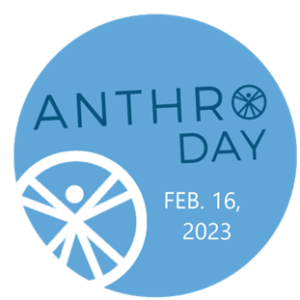 Yesterday was world anthropology day so we thought this would be the perfect time to reflect on the relationship between archaeology and anthropology. It’s important to say that archaeology is anthropology through and through (at least in the U.S.) and archaeology developed with anthropological principles of wanting to understand and respect the cultures of the people that we study. But while other subsections of anthropology focus on languages, cultural ideas, and the physical make-up of humans, archaeologists tend to study the history of people and cultures through the stuff they left behind, or material culture.
Yesterday was world anthropology day so we thought this would be the perfect time to reflect on the relationship between archaeology and anthropology. It’s important to say that archaeology is anthropology through and through (at least in the U.S.) and archaeology developed with anthropological principles of wanting to understand and respect the cultures of the people that we study. But while other subsections of anthropology focus on languages, cultural ideas, and the physical make-up of humans, archaeologists tend to study the history of people and cultures through the stuff they left behind, or material culture.
As we know, archaeology tends to adopt methods, theories, and practices of other social sciences. One of the more recent methods that we have adopted is ethnography which is the study of people through thorough observation in order to understand their rich social lives and culture. In archeology, we use ethnography to try to understand past cultures and the patterns that we discover at archeological sites. By studying a present-day culture that is analogous to a past culture, we can better understand the parts of cultures that we aren’t always able to find through material remains.
The ways that archeologists use ethnographies vary depending on the site they are studying. Some look at historical ethnographies which are both published and unpublished sources such as archives and field notes. This information is especially helpful if the archeology involves a group that was observed and interacted with in the past but is no longer living, or, who had many cultural changes. Additionally, some archeologists rely on oral histories. These oral histories are like ethnographies but instead of asking questions related to cultural systems or participating in the culture through participant observation, the archeologist invites individuals to share their histories through their experiences or stories that were passed down through generations. By consulting present-day people about the past and emphasizing group histories that have been passed down archeologists gain information on the lives of the people in the past. This information can then be applied to the material culture of the past groups related to the present-day cultures who gave oral histories.
Archaeology is best when it consults all the sources it can, and ethnographic sources are some of the most informative depending on the site. We hope you enjoyed anthro day 2023 and we’re looking forward to seeing what the future of anthropology and archaeology holds!
Further Reading:
https://www.americananthro.org/anthroday
https://www.thoughtco.com/ethnoarchaeology-cultural-anthropology-archaeology-170805
Parker, Bradley J.
2011 Bread Ovens, Social Networks and Gendered Space: An Ethnoarchaeological Study of Tandir Ovens in Southeastern Anatolia. American Antiquity 76.4: 603–27.
Schiffer, Michael Brian.
2013 Contributions of Ethnoarchaeology.” The Archaeology of Science. Vol. 9. Manuals in Archaeological Method, Theory and Technique: Springer International Publishing, 53–63.
Politis, Gustavo
2015 Reflections on Contemporary Ethnoarchaeology. Pyrenae 46.